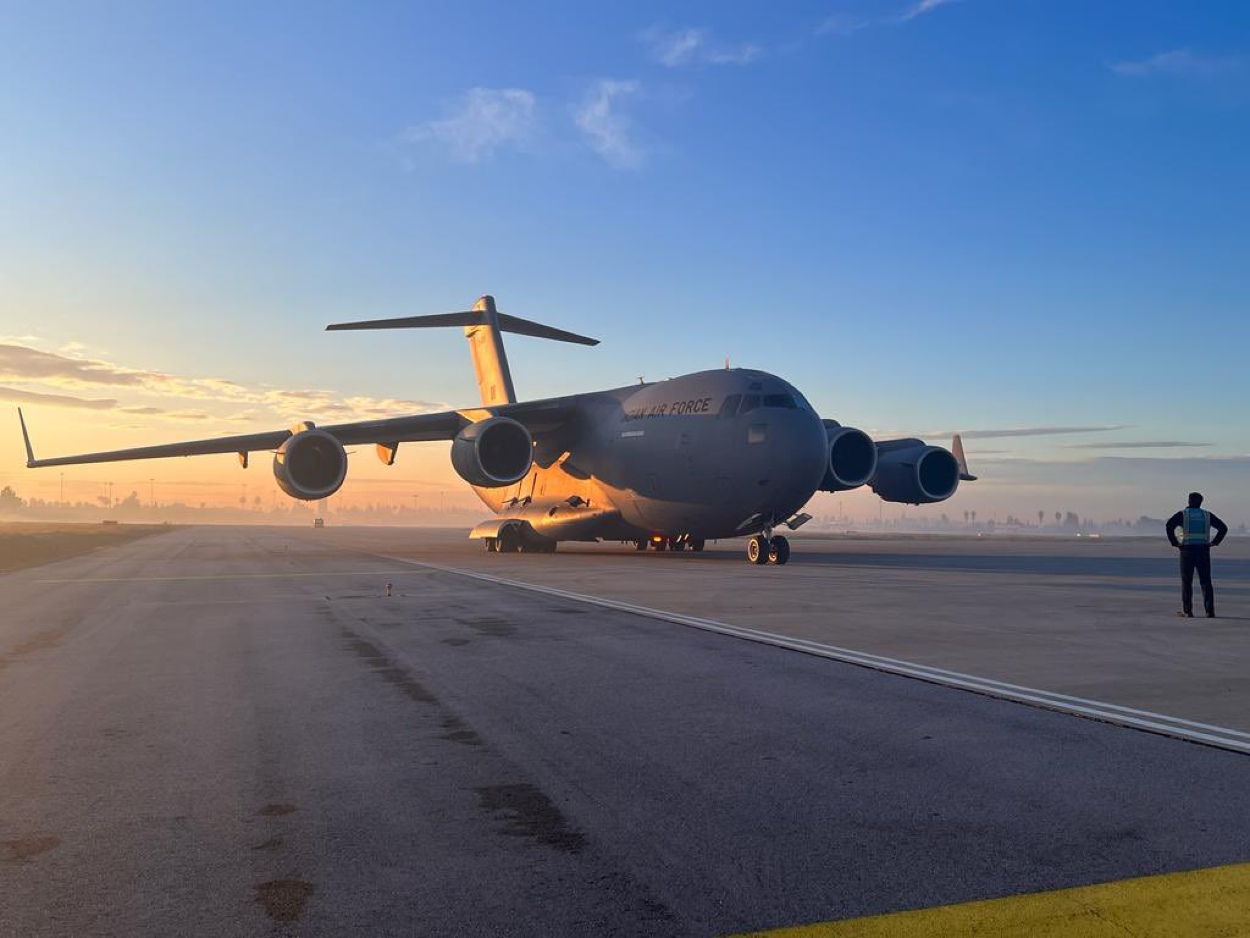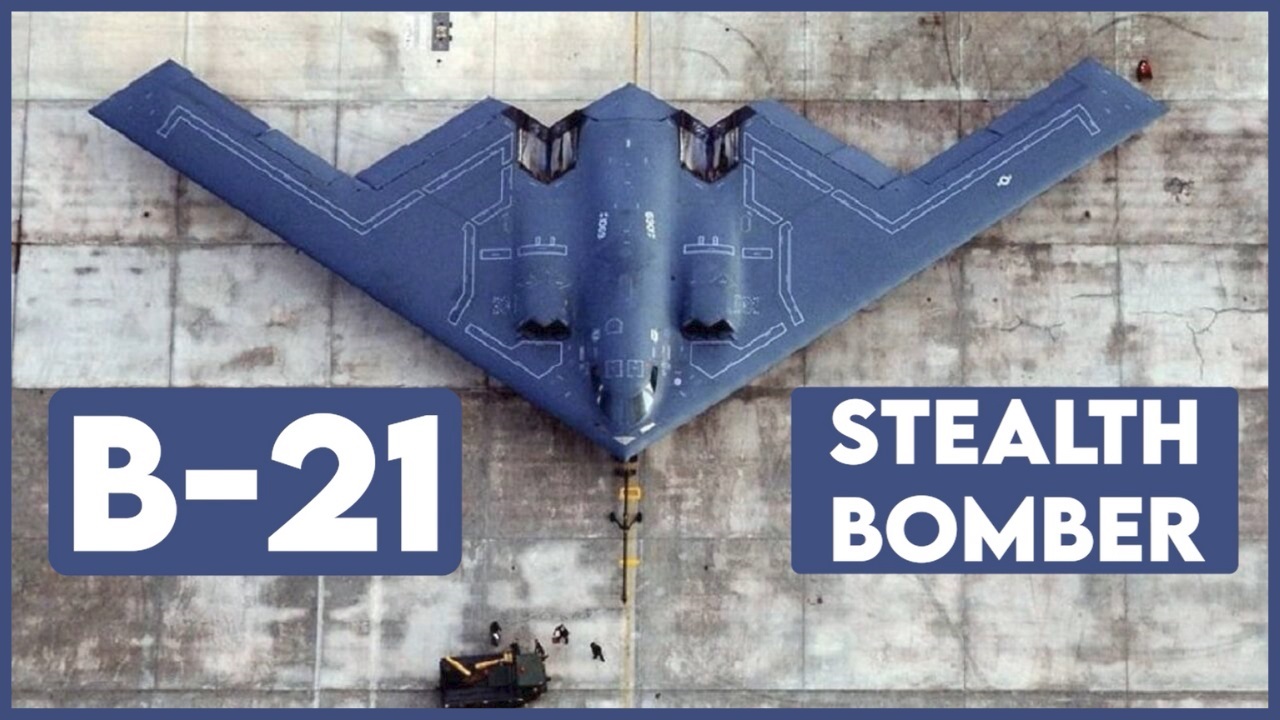The US Air Force’s (USAF) new B-21 Raider “flying-wing” bomber made its first flight a few days back and rekindled thoughts of an airframe design that evolved for nearly a century but perhaps needs more exploitation.
Like its predecessor, the Northrop-Grumman B-2 ‘Spirit,’ the Raider will be able to deliver both conventional and nuclear weapons around the world using long-range and mid-air refueling capabilities.
At nearly US$750 million apiece, it is a costly beast. USAF plans to buy 100 stealthy planes, which Northrop calls a sixth-generation aircraft. The flying wing appears to have secured its place in the USAF bomber fleet well into the 21st century.
Among the other flying wings produced in significant numbers was the Lockheed Martin RQ-170 Sentinel. Many drones are of flying-wing design. Under prototype stage aircraft and unmanned aerial systems (UAS) are BAE Systems Taranis, Boeing Phantom Ray, Sukhoi S-70 Okhotnik-B, Dassault nEUROn, and technology demonstrator for DRDO’s Ghatak.
The Chinese underdeveloped H-20 bomber is also a flying wing. The Flying-V is a proposed airliner of flying wing configuration being studied by researchers at Delft University of Technology in the Netherlands.
Due to the practical need for a deep wing, the flying-wing concept is mainly adopted for subsonic aircraft. There has been continual interest in using it in the significant transport role where the wing is deep enough to hold cargo or passengers.
Many companies, including Boeing, McDonnell Douglas, and Armstrong Whitworth, have undertaken design studies on flying wing airliners, but no such airliners have yet been built.
Flying Wing Concept
A flying wing is a tailless fixed-wing aircraft with no definite fuselage, and its cockpit, fuel, payload, and equipment are accommodated inside the main wing structure. In some cases, a flying wing may have vertical stabilizers.
A pure flying wing is theoretically the lowest-drag design configuration for a fixed-wing aircraft. However, because it lacks conventional stabilizing surfaces and the associated control surfaces, the flying wing remains unstable and requires an appropriately designed control system.
The first proper flying wing, shaped like an elliptical seed, was possibly designed and flown by Czechoslovakian designer Igo Etrich in 1909. He finally abandoned the concept and added a tail for stability.
More formal flying-wing configuration studies began in the 1920s. Over a dozen flying-wing experimental aircraft were evolved in the 1930s and 1940s, including the German Horten Ho 229 jet. Many were planned as gliders.
However, there were severe stability issues both in the pitch and yaw axis. Finally, ailerons and elevators were combined into one unit, called elevons. Rudder control for yaw was provided by wing tip-mounted split-clamshell flaps that opened to create drag on the desired side. If the wing tips were placed farther aft of the center of gravity, they tended to act like a tail for a stabilizing effect.
Military interest in the flying wing waned during the 1950s with the development of supersonic aircraft. It was renewed in the 1980s due to its potential for stealth technology and the military’s increasing need to penetrate areas heavily defended by radar.
The flying wing was reborn. It finally led to the B-2 stealth bomber. In early 1988, Northrop Corporation received a US$2 billion contract from the USAF to build the B-2. The contract was to procure 132 aircraft. With the demise of the Soviet Union, the number was reduced to 20 operational aircraft plus one test aircraft.
Adopting a thick wing that accommodated the crew and equipment directly conflicted with the optimal thin wing for supersonic flight. No supersonic flying wing has ever been built.
Advantages & Limitations Of Flying Wing
Aerodynamically, the pure flying wing is not a remarkable design. Also, it is unstable. Only after modern computer-controlled fly-by-wire systems evolved could they compensate for the aerodynamic drawbacks.
Remaining subsonic is another drawback in the hypersonic age. Because the flying-wing aircraft used the whole airplane to provide lifting force, it would allow heavier loads to be carried. The significant advantage is the enormous onboard real estate for fuel (range and endurance) and integral weapon bays.
Flying Wing Bombers
The Northrop YB-35 was an experimental flying-wing, pusher propellers powered, heavy-bomber aircraft developed shortly after World War II. Only prototypes and pre-production aircraft were built.
Two unfinished airframes were converted to eight Allison J35 jet engines and designated YB-49. Seven incomplete airframes began conversion to jet power as YB-49B but were never finished.
The B-2 ‘Spirit’ has a worldwide reach through aerial refueling. It is powered by four General Electric F-118-GE-100 engines with 17,300 pounds of thrust per engine. The B-2 has a wingspan of 172 feet and a length of 69 feet.
It is a high-subsonic-speed aircraft with a ceiling of approximately 50,000 feet. Its unrefuelled range is about 6,000 nautical miles, with a 40,000-pound payload. B-2’s composite materials, special coatings, and flying-wing design contribute to stealth.
The Northrop Grumman B-21 Raider is still under development as a part of the Long Range Strike Bomber (LRS-B) program. It will be a long-range, stealth, intercontinental strategic bomber capable of delivering conventional and thermonuclear weapons.
It will replace the Rockwell B-1 Lancer and Northrop Grumman B-2 Spirit by 2040, possibly with the Boeing B-52 Stratofortress. It is expected to enter service by 2027. Details are still confidential.
The Russian Tupolev PAK DA is an underdeveloped next-generation, flying-wing design, subsonic, stealth strategic bomber. The aircraft is expected to enter serial production in 2027.
It is designed for a 12,000-kilometre operational range and endurance of 30 hours and will carry both conventional and nuclear payloads up to 30 tons. The Xi’an H-20 is an underdeveloped, flying-wing design, subsonic stealth Chinese strategic bomber. It is expected to be ready by 2025.
Great For Unmanned Platforms & Drones
Most unmanned aircraft still fly subsonic, and many are of flying-wing design. India tested the Autonomous Flying Wing Technology Demonstrator, a precursor to the autonomous stealth unmanned combat aerial vehicle (UCAV) ‘Ghatak’ developed by the DRDO, primarily for the Indian Air Force.
The Lockheed Martin RQ-170 Sentinel, nicknamed Wraith, is an American flying-wing drone operated by the USAF for the CIA. Flying-wing X8 can fly autonomously from take-off to landing.
In real-time, the user can plan, fly, and modify the unmanned aerial vehicle (UAV) mission. It can be used for surveillance by flying up to a max speed of 100 kmph. Skywalker is a long-range flying-wing design drone that can be used for mapping, surveillance, carrying a specialized payload, or even as a target drone.
The Northrop Grumman RQ-180 is an American stealth, flying-wing, design UAV surveillance aircraft intended for contested airspace. The Hongdu GJ-11 Sharp Sword is a Chinese stealth flying-wing UCAV that can carry a 2,000 kg payload.
Turkish Aerospace Industries’ (TAI) flying-wing combat drone, Anka-3, has already flown and is meant to enable low radar visibility, high-speed transfer capability, and high payload.
The Sukhoi S-70 Okhotnik-B is a Russian stealth-heavy UCAV with a flying-wing design being developed as a sixth-generation aircraft project. It will be part of a manned-unmanned team with the Su-57 fight-generation fighter.
Blended Wing-Body
Boeing and Lockheed have been working on stealthy tactical cargo aircraft with a blended wing-body (BWB) design for more survivable airlifters and as a flight refueller. These could be a flying wing, with or without a vertical stabilizer—the Boeing-NASA X-48 is an uncrewed or pilot-optional variations subscale design for such an experiment.
The USAF is separately looking for a stealthier successor to the C-17 Globemaster III cargo aircraft. A BWB-type vehicle could be developed as a subsonic transport and tanker in the next 10 to 15 years, incorporating some stealth.

Future Airliner Options
A wing that is made deep enough to contain the pilot, passengers, engines (can be external), fuel, undercarriage, and other necessary equipment will have an increased frontal area when compared with a conventional wing and long-thin fuselage.
Boeing has been studying possible applications for civilian and military transports. Responding to the sharp increase in air travelers, Boeing and NASA have been developing a passenger airplane design that can carry 800 passengers per flight (160 more than a 747).
The new blended-wing body, or “flying wing,” design does away with the cigar-shaped fuselage and tail section featured since the 1930s. The new sleek platform resembles a boomerang.
The double-deck cabin would be divided into five bays per deck. Most passengers won’t have a window, so the aircraft will have video screens that display window views. Each bay will have doors at the front and back to make emergency exits easier.
But these numbers may not match the current airliners. The emergency evacuation systems will require redesign with adequately closed exit doors. There will be implications for airport handling of the aircraft.
There are still several challenges before a production aircraft can be made. The much larger cabin would require a freshly designed pressurization system. The current airliners fly around 950 kmph.
Achieving the same in a much thicker flying wing would mean higher drag, higher engine power, and, consequentially, higher fuel consumption. Aerodynamic stability and system redundancies would have to be built in. The passengers would have to be convinced of safety.
The flying wing has the potential to be more than just a commercial passenger jet. It could also be used as a cargo aircraft and a long-range military airlifter. With the airline industry bursting at the seams, the flying-wing design may help airlines meet the needs of an increasingly mobile society in the 21st century.
NASA has already prepared design criteria for a flying-wing cargo plane. Thus, Cargo and passenger airplanes of the future could have a flying-wing design.

Future Designs
Aircraft designers and manufacturers continually search for ways to improve aircraft for speed, range, weight-carrying capacity, and many other characteristics. The bi-directional flying wing is a variable-geometry concept comprising a long-span subsonic wing and a short-span supersonic wing, joined as an unequal cross.
Evolving since 2011 under a NASA study, the low-speed wing would have a thick, rounded aerofoil to contain the payload and a long span for high aerodynamic efficiency, while the high-speed wing would have a thin, sharp-edged aerofoil and a shorter span for low drag at supersonic speed.
The craft would take off and land with the low-speed wing across the airflow, then rotate so that the high-speed wing faces the airflow for supersonic travel. It will also reduce sonic booms.
There is action evolving in flying wings. All the major powers have flying-wing bombers and drones growing. For India, it is already a work in progress. A large stealth military cargo plane-cum-refueller will indeed precede an airliner.
- Air Marshal Anil Chopra (Retired) is an Indian Air Force veteran fighter test pilot and is currently the Director-General of the Center for Air Power Studies in New Delhi. He has been decorated with gallantry and distinguished service medals while serving in the IAF for 40 years. He tweets @Chopsyturvey
- Follow EurAsian Times on Google News




